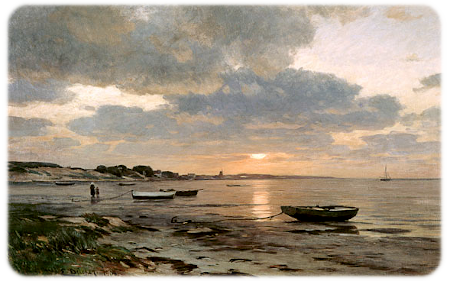- News & information
- About
- History
- George V. Voinovich
- George V. Voinovich Collection
- Calendar
- How to Find Us
- News
- Archives
- Photojournalism Fellowship Project
- Photo Essays
- Current Fellow
- Previous Fellows
- Reports and Publications
- Archives
- Students
- Prospective
- Center for Entrepreneurship
- Environmental Studies
- HTC/Voinovich School Scholars
- Master of Public Administration
- Current
- HTC/Voinovich School Scholars
- Center for Entrepreneurship
- Environmental Studies
- Master of Public Administration
- Alumni
- Contact
- School Leadership
- Strategic Partners Alliance
- Ohio University Public Affairs Advisory Committee
- Ohio University Public Affairs Advisory Committee
- Faculty and Fellows
- Faculty
- Visiting Professors
- Voinovich Fellows
- Professional Staff
Tetramyxa

Note that the following article incorrectly called a gall-forming plasmodiophorid on the seagrass Halophila as Tetramyxa parasitica: Marziano, F., R. Villari, and G. Tripodi. 1995. A plasmodiophorid fungal parasite of the seagrass Halophila stipulacea . Mycotaxon 55: 165-170 .
In a thorough study of gall-forming parasites of the seagrass Halophila , Kolátková et al (2020) clearly showed that the organism reported by Marziano et al was distinct from T. parasitica , and placed the organism along with another phytomyxid parasite on Halophila in a new genus, Marinomyxa Kolátková, Čepička, Hoffman et Vohník.
Personal Comments
Collecting Tetramyxa took several years. The first attempt was when I was visiting Stefan Buczacki's lab at the then National Vegetable Research Station in Wellesbourne, UK, in 1982. I was there to work on Plasmodiophora brassicae , but got sidelined briefly into collecting Polymyxa betae and into trying to get Tetramyxa . Stefan arranged for us to get the herbarium sheet of Ruppia sp. with a dried gall caused by Tetramyxa that was referred to in Karling's 1968 book (page 48) as an early collection of Tetramyxa . The sheet was in the Father Reader Herbarium at the University of Bristol. It was a pleasure to be able to photograph the sheet. Stefan and I set off to the southern coast of the UK on a rainy day to see if we could locate either infected Ruppia or Triglochin . We did not find any infected plants, but we had a great time wandering along the coast in the rain and having a lunch by the fire in a cozy pub. Stefan eventually left NVRS and went on to become a well-known radio personality and popular gardening author throughout the UK.
I, on the other hand, was still looking for Tetramyxa . When I arranged my first trip to Scandinavia to collect Callitriche with Sorodiscus in 1986, I contacted Guy Hällfors of the Tvärminne Zoological Station in Finland. Guy met me at the train station in Helsinki and took me to Tvärminne where I stayed for a few days. He and I could not find any infected Ruppia in that area, so he arranged for me to visit Carl-Adam Hæggström at the Nåto Biological Station in the Åland Islands between Finland and Sweden. I spent a few days in Turku, then took a ferry to Mariehamm where I met Prof. Hæggström and his lovely family . (I was told several years later that the Hæggström couple was known affectionately throughout Scandinavia as "Adam and Eve."). The Hæggströms were perfect hosts, and showed me a lot of the Åland Islands, a place very few Americans have visited.
They introduced me to some very interesting people. We were invited to a delightful dinner party that included a sauna right on the shores of the Baltic Sea. When we came out of the sauna to jump into the sea, a male swan was there with his family and chased us along the shore for a while. He eventually stopped when he knew we were not a threat to his family, so we were able to jump into the sea to cool.
We had no problem locating Tetramyxa on several different hosts, and I was able to use the facilities at Nåto Biological Station to prepare the materials for electron microscopy.
Images of Tetramyxa
- Tetramyxa herbarium sheet
- Tetramyxa galls on host
- Tetramyxa sporogenic plasmodia, LMG
- Tetramyxa sporosori, LMG
- Tetramyxa sporosori, TEMG
- Tetramyxa cruciform divisions, TEMG
- Tetramyxa synaptonemal complexes, TEMG
- Tetramyxa serial sections of synaptonemal complex, TEMG
Selected References for Tetramyxa
- Braselton, J. P. 1990. Ultrastructure and karyology of Tetramyxa parasitica (Plasmodiophoromycetes). Can. J. Bot. 68: 594-598.
- Goebel, K. 1884. Tetramyxa parasitica . Flora 67: 517-521.
- Hartog, C. den. 1963. Tetramyxa parasitica , een gal op Ruppia . Gorteria 1: 138-140.
- Kolátková, V., Čepička, I., Hoffman, R. et al . 2020. Marinomyxa gen. nov. accommodates gall-forming parasites of the tropical to subtropical seagrass genus Halophila and constitutes a novel deep-branching lineage within Phytomyxea (Rhizaria: Endomyxa). Microb Ecol. Doi: 10.1007/s00248-020-01615-5
- Luther, H. 1949. Beobachtunger über Tetramyxa parasitica Goebel. Mem. Soc. Fauna Flora Fenn. 25: 88-96.
Contact Information:
(740) 593–9381 | Building 21, The Ridges
Ohio University Contact Information:
Ohio University | Athens OH 45701 | 740.593.1000 ADA Compliance | © 2018 Ohio University . All rights reserved.
